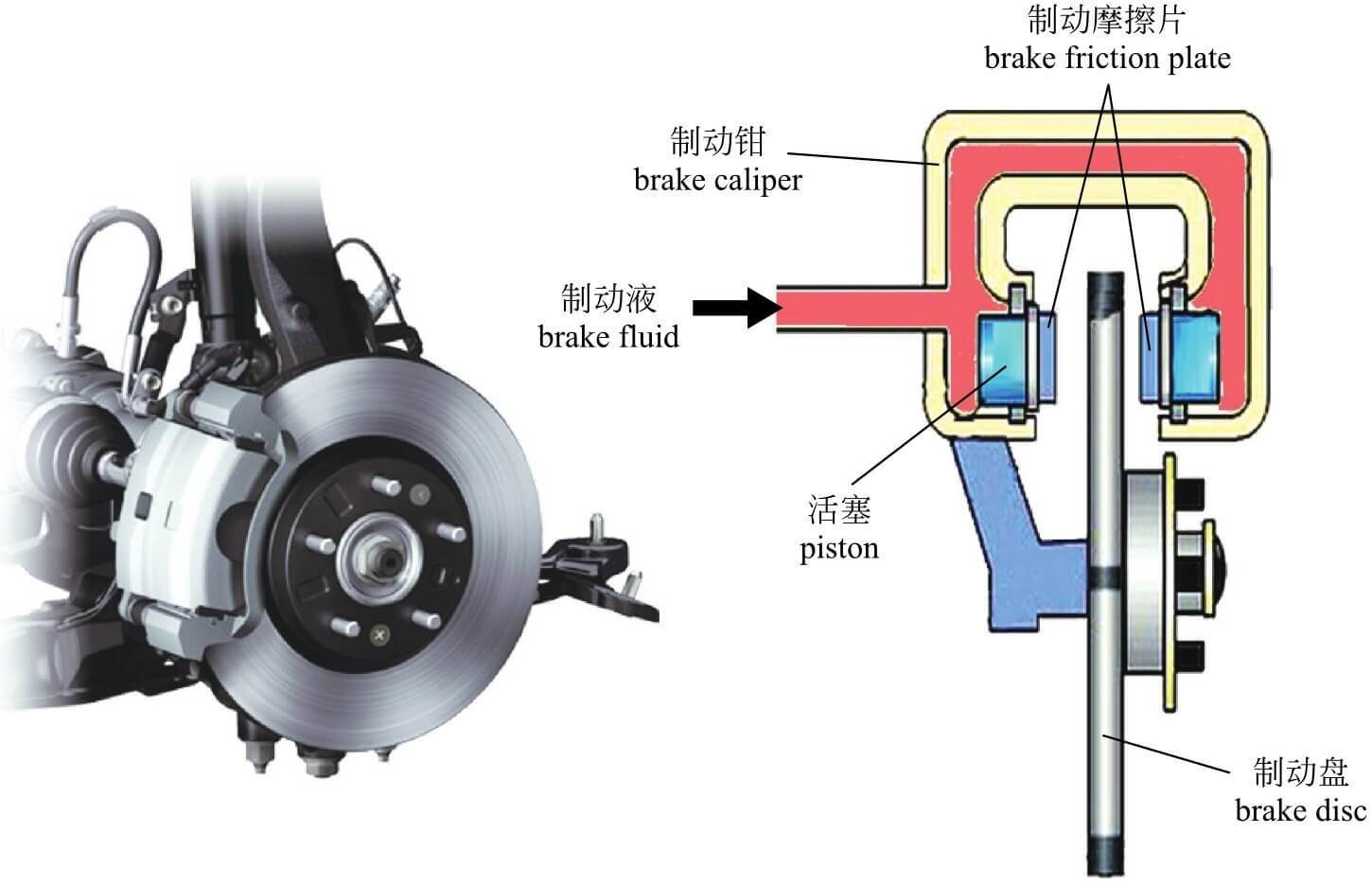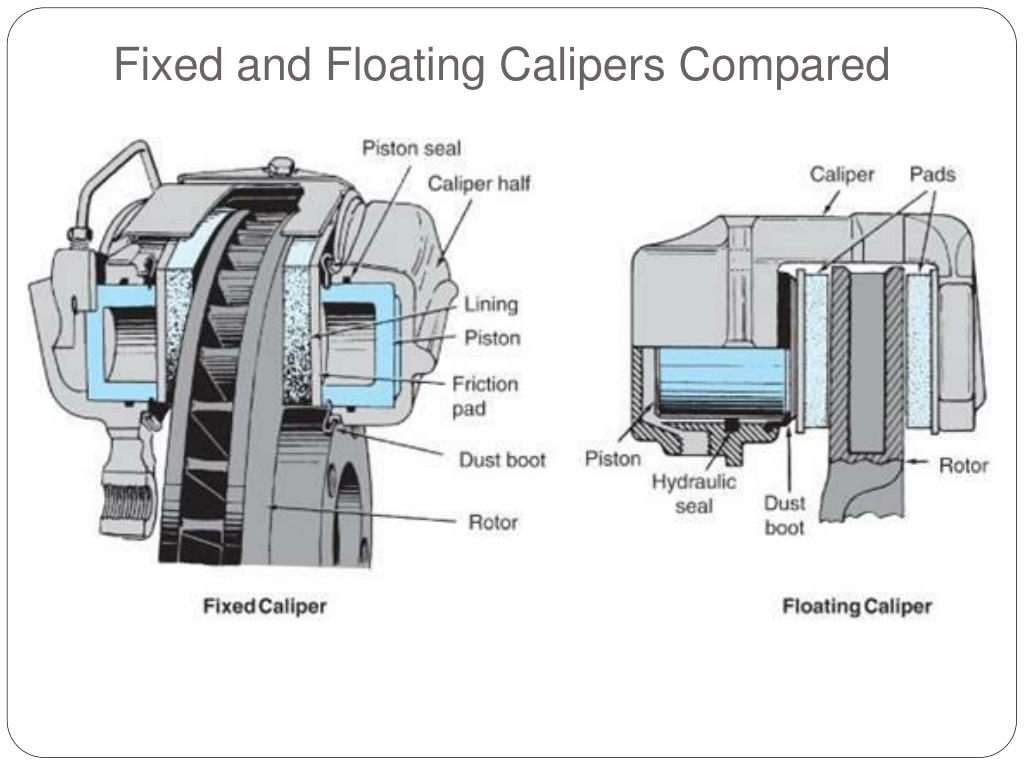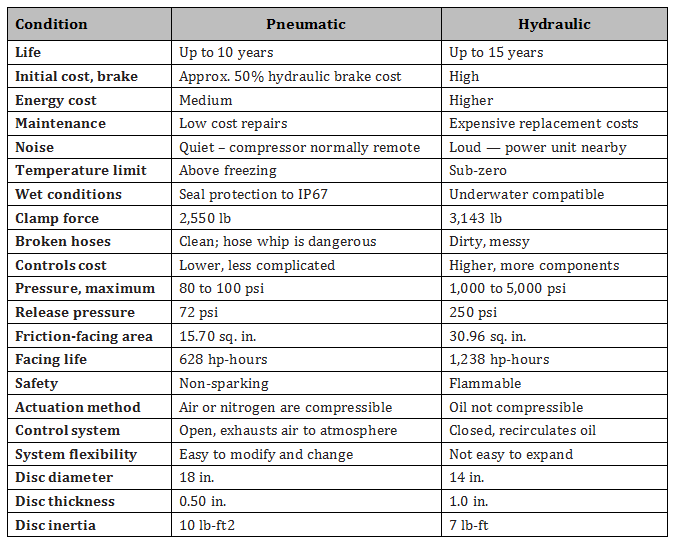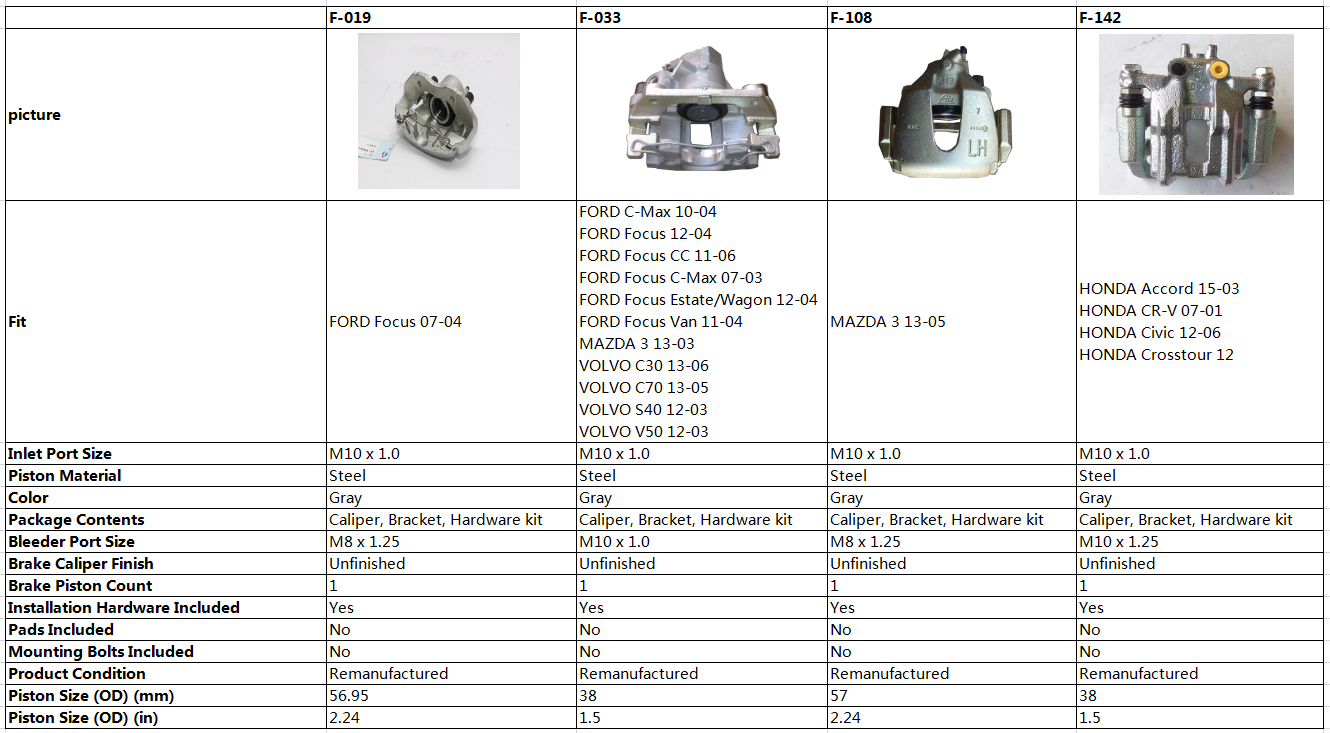
A brake caliper is a vital part of the disc brake system of a vehicle. A disc brake, as illustrated below, is a type of brake that uses a brake caliper to squeeze pairs of pads against a disc-shaped rotor to create friction to decelerate or stop the vehicle.
Specifically, inside each caliper is a pair of metal plates bonded with friction material, known as brake pads. The outboard brake pads are on the outside of the rotors (toward the curb) and the inboard brake pads on the inside (toward the vehicle). When the brake is stepped, brake fluid from the master cylinder generates hydraulic pressure on one or more pistons in the brake caliper that forces the pads against the rotor. The brake pads have high-friction surfaces and are used to slow the rotor down or even bring it to a complete stop. When the rotor slows or stops, so does the wheel as they are attached to each other.

A floating brake caliper moves with respect to the disc, along a line parallel to the axis of rotation of the disc; a piston on one side of the disc pushes the inner brake pad until it makes contact with the braking surface, then pulls the caliper body with the outer brake pad so pressure is applied to both sides of the disc. However, floating caliper designs with a single piston are vulnerable to sticking failure because of dirt or corrosion entering at least one mounting mechanism and stopping its normal movement. This can lead to the brake caliper's pads rubbing on the disc when the brake is not engaged or engaged at an angle. Sticking can be a result of infrequent vehicle use, failure of a seal or rubber protection boot allowing debris entry, dry-out of the grease in the mounting mechanism and subsequent moisture incursion leading to corrosion, or any combination of these factors. Consequences can include reduced fuel efficiency, excessive heating of the disc or excessive wear on the affected pad. A sticking front caliper may also cause steering vibration.
Another type of floating caliper is a swinging brake caliper. Unlike a pair of horizontal bolts that enable the caliper to move straight in and out respective to the car body, a swinging brake caliper uses a single, vertical pivot bolt located somewhere behind the axle centerline. When the driver presses the brakes, the brake piston pushes on the inboard piston and rotates the whole caliper inward, when viewed from the top. Because the angle of the swinging caliper's piston changes relative to the disc, this design uses wedge-shaped pads narrower in the rear on the outside and narrower on the front on the inside.

When it comes to the power source that pushes the piston, brake calipers fall into the hydraulic type and pneumatic type. The former uses brake fluid to push the pistons while the latter works with air pressure. Pneumatic brake calipers are more widely used when the requirements for power and pressures are not that demanding, whereas hydraulic brake calipers are used where greater amounts of power and pressure are required. Both of these two types have their own distinct advantages, some of which have been detailed in the chart.
What Factors Will Reduce the Service Life of a Brake Caliper?
1.Excessive Use
In the event of excessive use of a vehicle, the heat generated from the braking system can weaken and break down seals inside the calipers and cause the failure of the caliper.
2.Improper Maintenance
As time goes by, a brake caliper may become rusty or dirty, which calls for frequent and proper maintenance. Improper maintenance will speed up the death of a brake caliper.
3.Substandard Material
The aging process of substandard tubes, pistons, and seals will make them decay in a faster way which may lead to brake fluid leakage and other problems.
What Evidences Potential Failure of a Brake Caliper?
The breakdown of a brake caliper can be reflected by a host of indications. The brake and the brake caliper should be checked immediately in the event of one of the following.
1. The brake continuously squeaks, squeals or grinds.
2. The warning light of the brake or antilock braking system (ABS) is on.
3. The car jerks or pulls to one side when the car brakes.
4. The brake will not work properly unless you slam on it.
5. The brake pedal feels unusually soft or hard.
6. Brake fluid leakage is noticed around the wheels or the engine compartment.
How Are Brake Calipers Supposed to Be Maintained?
Carrying out maintenance for brake calipers can effectively lengthen their service life, prevent the occurrence of potential failure and guarantee the safety of the car and the driver. Maintenance is suggested to be performed on the brake caliper at intervals of 4 to 12 weeks, depending upon the frequency and duration of the operation. General maintenance should include the following aspects:
Check both brake levers for easy of movement.
Clean all bearings and glide points
Lubricate all bearing and glide points.
Check to ensure that the brake pads do not rub against the brake disc when the brake caliper is open.
Check for fixed bolt / screw connections:
Brake caliper to the machine component
Brake chamber to caliper-lever arm
Brake pads to caliper-lever arm
Check the following for proper seal/leaks:
Brake chamber
Hose connection
Checking brake pad wear:
Brake pad material must have a thickness of at least 6 mm (from the top surface of the brake pad to the top surface of the steel mounting plate).
How to Change a Brake Caliper?
As time goes by, calipers risk rusting or getting locked in place which can make brakes freeze up or squeal. Immediate replacement is of vital importance to driving safety. Here are some steps that are suggested to follow when a brake caliper is to be changed.
Remove the Original Brake Caliper

Install the New Brake Caliper



